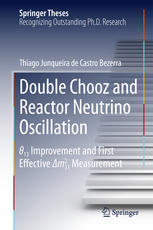

Most ebook files are in PDF format, so you can easily read them using various software such as Foxit Reader or directly on the Google Chrome browser.
Some ebook files are released by publishers in other formats such as .awz, .mobi, .epub, .fb2, etc. You may need to install specific software to read these formats on mobile/PC, such as Calibre.
Please read the tutorial at this link: https://ebookbell.com/faq
We offer FREE conversion to the popular formats you request; however, this may take some time. Therefore, right after payment, please email us, and we will try to provide the service as quickly as possible.
For some exceptional file formats or broken links (if any), please refrain from opening any disputes. Instead, email us first, and we will try to assist within a maximum of 6 hours.
EbookBell Team

4.4
32 reviewsThis book is based on the author’s work at the Double Chooz Experiment, from 2010 to 2013, the goal of which was to search for electronic anti-neutrino disappearance close to nuclear power plant facilities as a result of neutrino oscillation. Starting with a brief review of neutrino oscillation and the most important past experimental findings in this field, the author subsequently provides a full and detailed description of a neutrino detector, from simulation aspects to detection principles, as well as the data analysis procedure used to extract the oscillation parameters. The main results in this book are 1) an improvement on the mixing angle, θ13, uncertainty by combining two data-sets from neutrino event selection: neutron capture on gadolinium and on hydrogen; and 2) the first measurement of the effective squared mass difference by combining the current reactor neutrino experimental data from Daya Bay, Double Chooz and RENO and taking advantage of their different reactor-to-detector distances. The author explains how these methods of combining data can be used to estimate these two values. Each method results in the best possible sensitivity for the oscillation parameters with regard to reactor neutrinos. They can be used as a standard method on the latest data releases from the current experiments.